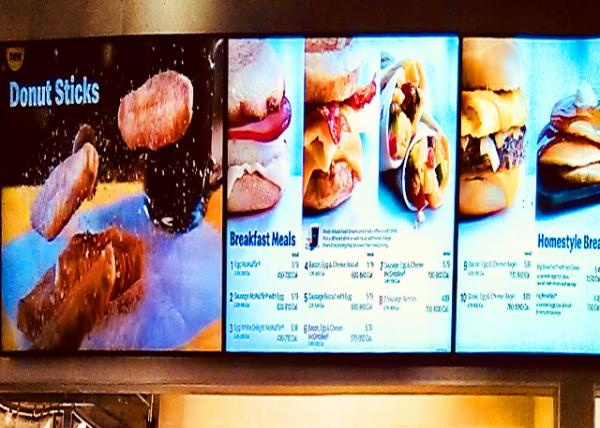2019-03-24 【Aiden in English】
Enter March. Possibly the most enjoyable month of the year. While that same argument can be made for all other 11 months, it's called March Madness for a reason. It's almost poetic that such a chaotic aspect of sports can reflect an equally appalling part of my life. North Penn HS notoriously ramps up the curriculum's tempo in the third marking period, as it should, and March ends up squarely in the midst of the storm. As strange as it may seem, Calculus lightened up significantly, perhaps because I enjoy creating three-dimensional objects more than calculating the rate of water filling an ice cream cone (why would you even do that?). March is unique in many other ways. It marks the tip-off to March Madness, an event that captures the entire nation. But why? According to an NCAA article, the 2018 tournament, from the first four to the Final Four, drew 97 million spectators on the broadcast in the US alone. That's around 30% of the nation's population. In comparison, the 2019 Super Bowl received 103 million viewers, which is generally a much larger audience. Granted, the Super Bowl occurs in one night, while the NCAA basketball tournament magic takes a few weeks to unfold. Still, the question remains: what attracts fans like me to these sporting events? The NBA and NFL display the highest skill levels; deservingly, they receive the most attention. Due to the NFL's limited number of matches, the collegiate football divisions also receive significant viewership. However, the NBA has 82 games. It also boasts talent comparable to that of college players and distinct playing styles. Switching between college basketball and the NBA is like eating two steaks: undercooked and perfectly medium. American football does not have this issue; college always makes up for the lack of skill with more offense. So, what attracts a person like me, who enjoys basketball thoroughly, to a tournament in a league I hardly follow? To begin with, one must examine the reasons behind sports themselves. A general idea of sports is a purpose for entertainment in the otherwise monotonous lives of the working class. Team sports can provide excitement and pride for the individual, a sense of unity among people, and a purpose to strive for, whether it is a championship or conference title. Collegiate basketball elevates this purpose through 64 (or 68) different teams. By far the largest tournament in the US in terms of size and skill, the longing to win a championship for a college in your area is a significant motivator for viewers. Philadelphians might not care as much about collegiate basketball as they would have had it not been for Villanova's dominance in the previous few years. Examining the distribution of good teams across the nation, there is a notable spread of dominance from east to west; thus, regardless of where a family lives, there is likely a decent college team to cheer for. While Villanova's success cannot explain my liking of basketball, it attracts many casual fans. Many other reasons are present. The general excitement from die-hard fans often magnetizes less-caring fans. The constant buzz on all social media can annoy a person into caring. Perhaps the most intriguing aspect is that each tournament round is a single elimination. That means one loss, and you're out. While sounding normal, the NBA has implemented a seven-game series to allow the better team to move on. However, to sate the large bracket, single elimination throughout causes many upsets. Thus, each game holds a certain amount of tension, a flicker of hope for both teams, no matter the odds. One team can go cold, and the other can get hot any night. The result of a given night is 2018's Virginia vs UMBC, an absolute stunner. Combined with the human error of seeding teams, upsets occur annually, which in turn grows the tournament's popularity. So, while you sit on the couch watching the game, ask yourself: is it an annoying family member constantly talking about the tournament or the same buzz on the phone about some kid named Zion Williamson who introduced you to the Big Dance? Perhaps it was the thrill of watching a Cinderella story blossom into despair, as Loyola-Chicago was crushed by a major school. Regardless of the reason, the Dance is here, and I will enjoy it, just like millions of others worldwide. 【红霞译】
终于到了,三月!兴许这是一年中最有趣的一个月,虽然“公说公有理,婆说婆有理”,其它十一个月均可摆出同样的论点,可眼下正好处在 “疯狂三月”这个节骨眼上。
令人痴迷的运动节奏竟然与让我抓狂的生活韵律相吻合,简直太富诗意了。北宾州高中也别有用心加快了课程进度,而且恰逢赶上第三学制,一下子把三月推到风口浪尖。奇怪的是“微积分学”特别给力,比起计算填满冰淇淋蛋卷的水流速度(吃饱了撑的不是?),我可能更喜欢构思三维空间。
三月还有许多其它特别的方面,“疯狂三月”偏偏在全美打响了发令枪,难道事出有因?
根据全美大学体育协会有关报道,仅在美国境内2018年篮球联赛中,从头四个队首场初赛到前四名最后决赛,电视直播共吸引了9,700万观众,约占全国人口的30%。相比之下,2019年“超级碗”美式橄榄球总决赛收视人次达到1.03亿,一般说来后者收益更大,但毕竟仅占用一个晚上,而全美大学体育协会篮球白热化对峙则要持续几个星期方见分晓。
问题在于:哪种体育赛事更能吸引像我这样的球迷?美国职业篮球和橄榄球比赛竞技水平最棒,收视率自然居高不下,由于橄榄球赛场次有限,导致大学队之间的争夺格外叫座。
然而,美职篮设有82场比赛,不光球技是大学队无法比拟的,就连球风也令大学队望尘莫及,观看大学队与职业队的比赛如同品尝两种牛排:一个火候欠佳,另一个火候适中。美式橄榄球没有这种问题,技术差的大学队总是采用进攻方式补其之短,那么是什么东西吸引像我这样的篮球迷去观赏自己不太热衷的橄榄球联盟比赛呢?
首先必须从体育本身探析起因,工薪阶层的平民百姓一般借助体育娱乐来调剂枯燥生活,无论夺得总决赛冠军也好或是荣膺分区榜首也罢,集体项目不仅给个人带来喜悦与自豪,同时还凝聚团队意识并激励大家为之奋斗。
大学篮球赛通过64(或68)支不同球队来达到上述目的,既然它是迄今规模最大水准最高的竞技比赛,人人把夺冠的厚望寄托于自己所在地区大学队身上,要不是地处宾州的维拉诺瓦大学在过去几年里战绩辉煌,费城人恐怕连正眼瞧他们一眼都不可能。就目前全国排名而言,现今从东区到西部,实力雄厚的球队分布于各个地方,因此无论身居何处,大概都能找到自己喜欢的球队,我之所以爱上篮球运动并非缘于维拉诺瓦大学,但它的名气确实将闲散体育迷吸引到篮球行列。
另外还有很多其它原因,铁杆粉丝挥洒出来的热情时常感染那些半吊子球迷,媒体再煽情也是枉费口舌,惟有一轮一轮的淘汰赛恐怕才能牵动人心。
这就意味着只要输掉一场,你即可出局,虽然听起来合乎常情,但美职篮却采取7场系列赛制,以便让好的球队把握晋级机会。既然为了满足大型比赛需求,那么单论淘汰赛势必留下诸多遗憾,以至于观摩两队交锋时心里总是紧张兮兮的,因为不管胜算有多大,双方都有可能输赢,所以每晚比赛不是败走麦城就是大爆冷门。2018年弗吉尼亚大学与马里兰大学巴尔的摩社区分校争夺结果绝对出乎意料,种子队表现失常,诸如此类的遗憾年年发生,赢家因此而名声大噪。 当坐在沙发上观看比赛的时候,你不妨扪心自问:与其听家中淘气包穷唠叨或电话里那个名叫蔡恩·威廉森的小子瞎白活比赛,不如看灰姑娘式绝处逢生之类的逗趣故事,哪怕目睹洛约拉大学芝加哥分校被对手折腾得死去活来,管它什么季节,现在大学联赛鏖战正酣,我得像世界各地成千上万的球迷一样赶紧享受体育带来的快乐。 Today in History(历史上的今天): 2016: Trip to NYC for Danish/Russian Visas(丹麦/俄罗斯签证纽约行) 2014: March Madness @ Fifth Grade(小学五年级的疯狂三月)

Donut-Stick Manic @ McDonald's (麦当劳·山寨油条 01-09-2019)  Snow Blazzer (雪地开拓者 02-20-2019) Snow Blazzer (雪地开拓者 02-20-2019)
 Cheerleaders @ Montgomeryville Malls Cheerleaders @ Montgomeryville Malls
(蒙哥马利“巨人山”镇商场·啦啦队 03-17-2019)
 Promotion of Donut-Sticks @ McDonald's Promotion of Donut-Sticks @ McDonald's
(麦当劳·山寨油条促销) 
Donut Sticks (油条) Crosslinks(相关博文): 2016: March Madness @ Seventh Grade(初二的疯狂三月) 2014: March Madness @ 5th Grade(小学五年级的疯狂三月) 10th Grade(高中二年级) |
